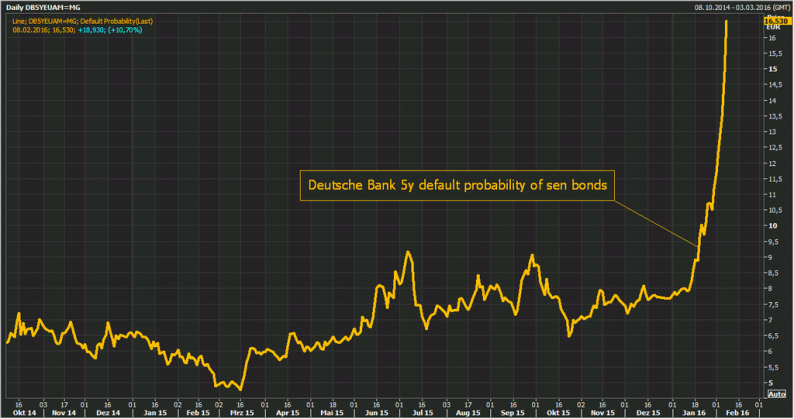The biggest event of the weekend, if not the month, was China’s FX reserve outflow update, which at $100BN was slightly better than the $120BN expected (it pushed China’s reserves to the lowest in nearly 4 years) but it was in the “no man’s land” between the BofA best case scenario ($37.5BN), and the GS worst case ($197BN). And while there was some hope this number, together with China being offline for the next week could lead to some stability across markets, this is what we said yesterday about this indecisive number: “for markets, what this means is that the next month will likely be market by more of the same sharp, illiquid volatility that has characterized 2016 so far.”
So far this prediction has proven to be spot on, because while there was some initial risk on sentiment in the Asian ex-China session, where the Nikkei rose 1.1% on the back of an early ramp in the USD/JPY (following the latest abysmal wage data out of Japan), everything went from bad to worse once Europe opened, and things started going “bump in the morning” across the European banking sector, where not only has it been more of the same with CDS spreads for major banks – most notably Deutsche Bank – continuing their surge wider, but also EM spreads to Bunds all following, with the Portugal-Germany Yield spread blowing out above 300 bps for the first time since 2014 and other peripheral nations following, such as Italy shown in the chart below:
Italy – Germany pic.twitter.com/XwQOsi2grT
— Guy Johnson (@GuyJohnsonTV) February 8, 2016
Here is a brief summary of the European carnage so far:
- Eurobank Ergasias sinks ~20% (as much as 21%)
- Alpha Bank plummets 14% (as much as 18%)
- Monte Paschi retreats 5.9% (as much as 8%)
Why the dramatic shift in European risk, where things were relatively stable for months on the heel of Europe’s QE? Perhaps Morgan Stanley’s note flagged last night had something to do with it. To wit:
One noteworthy aspect in the current risk-off environment is the lack of peripheral spread widening in Europe; this is unusual based on performance patterns during this cycle and most likely reflects the ECB’s substantial QE programme. While the region is often perceived as a relative consensus overweight among equity investors, we are more downbeat and prefer the US and Japan instead. Our European caution primarily reflects the prospect of further earnings disappointment across the region, but we are also wary of any resumption of geopolitical concerns.
Recent investor caution tends to focus on fears of excess USD strength, low oil prices and/or China, but we think it is quite plausible that Europe moves back up the pecking order (to its more usual place some would say!) as we move through 2016. The UK’s forthcoming referendum on EU membership, likely to take place in June, may appear the most plausible catalyst in the short term to raise regional risk premia, but the ongoing migrant issue risks eroding political cohesion over the medium term and political uncertainty is rising in the periphery. Greece has a daunting debt repayment due this summer, Spain is currently without a government, new European regulations are preventing Italy from adopting an effective ‘bad bank’ solution and the recently elected socialist government in Portugal is reversing course on prior austerity and competitiveness improvements. During a cyclical upswing, markets are prone to overlook such concerns, but the opposite would be true if growth starts to relapse.
Whatever the reason, one look at DB CDS which continue their relentless march into “something is very wrong with this counterparty” territory suggests that things are going from bad to worse for Europe’s banking sector.

It is not just DB: as we have been warning for the past month, and especially last Friday, the blow out across the entire European bank sector is starting to resemble Lehman levels:
Can Draghi sell bank cds? Euro bank risk looks systemic. TBTF cds blowing out throughout EZ- most at 52wk wides. pic.twitter.com/dUZlhErIYO
— J Pierpont Morgan (@pierpont_morgan) February 8, 2016
To be sure, DB appealing to both the BOJ and ECB to stop their easing, as we noted over the weekend, will hardly help things, and if anything will prompt more questions just how bad DB truly is.
And with Germany’s biggest bank once again on the ropes, and some even starting to casually throw out the “bailout” word, Germany’s stocks fared no better:
Worst of all, there are no near-term catalysts that can help Europe: the slow-motion trainwreck will continue until somehow confidence in eurobank solvency is restored, and now that neither QE nor NIRP can prop up the financial system suddenly Mario Draghi and his Davos “peer-pressuring” company have their jobs cut out for them.
So while the markets stress about the future, and whether Janet Yellen’s semi-annual congressional testimony mid week can achieve anything to shift risk sentiment, here is where we stand now.

















Leave A Comment